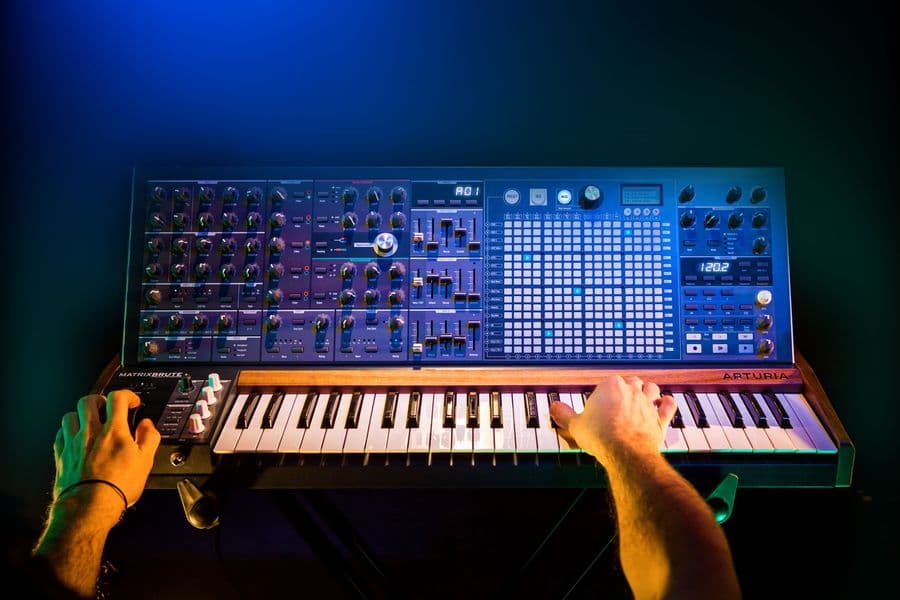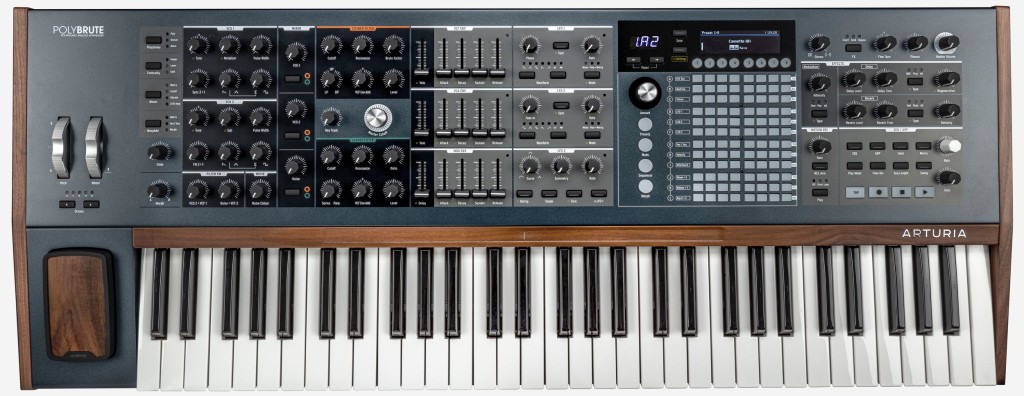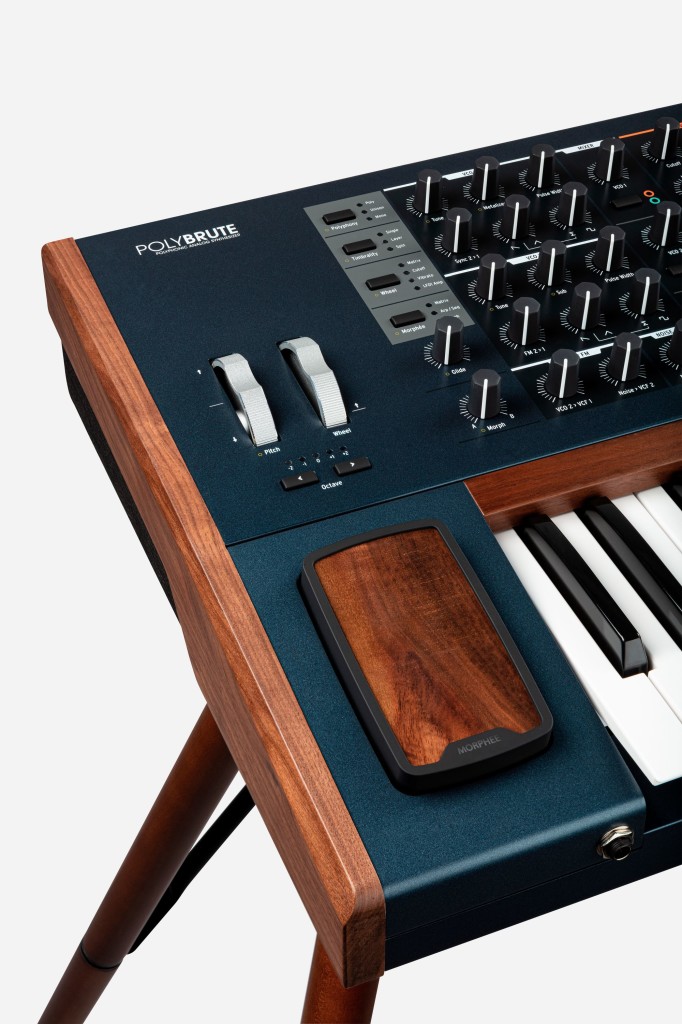If you thought the mono/duo/paraphonic MatrixBrute was an audacious synth with a lot of bells and whistles, wait until you meet its polyphonic sequel.
It’s the third epoch of polyphonic flagships – after the analog first wave, digital workstation second wave, and now hybrid third wave. This… unfortunately happens to coincide with a global pandemic and economic catastrophe, so it’s unlikely gigging will buy you a new instrument. But to be fair, feature-for-feature, there’s more value now to be had than ever before.
We’re also seeing simply a lot more features – even on analog instruments. And the MatrixBrute, of everything Arturia has done, was full of exotic features. The “Matrix” in the name was the centerpiece grid modular routing; the “Brute” a particularly Arturia-esque approach to edgy sounds, from oscillators to the revived Steiner-Parker filter with drive and everything in between. (Though in keeping with its philosophy of saying yes, it also has a ladder filter, too, for good measure.)
That was 2016. Now, in 2020, we get a polyphonic instrument that does essentially everything the MatrixBrute did, plus a lot more. Bonjour, PolyBrute.


It’s not an entry-level instrument – 2499 EUR. (Though that makes it just a hair more expensive than the 2299 MatrixBrute, which now looks almost conservative in comparison. Well, almost.) But there is a lot in there:
More Brute. Distortion, FM control, and wavefolding mean that just the sound of the oscillators can be pretty wild, even before you run them into the filter section and modulation.
Morphing. Arturia is leaning on this as the message even more than the polyphonic aspect. They now let you morph between preset snapshots inside a patch, in what may be the most 3-axis morphing focused instrument since the KORG Wavestation.
There’s even a 3-axis performance touchpad called the Morphée – which bears a resemblance (even in its name) to the Expressive E Touché. (Well, Arturia are French, so they’re allowed to do that.) The Touché is actually kinetic, though (the paddle moves around in physical space); the Morphée is more akin to a KAOSS Pad with pressure sensitivity.
There’s a dynamic ribbon strip, too. And you still get pitch and mod wheels.

Effects that make this come closer to a computer. It’s not just that this has what the marketing describes as “studio-grade” effects – it’s that Arturia says they’re using algorithms from their desktop software FX Collection. And that’s interestingly the first time we really see this company fully reveal that they got their start developing plug-ins before hardware.
Note that this departs from the Analog Effects on the MatrixBrute – instead of those fairly vanilla options, you now get Modulation FX, Delay, and Reverb, with tons of algorithms in each. That gives you chorus, phaser, flanger, ring mod, BBD, digital delay, shimmer reverbs, spring and plate, hall reverbs, and more.
Matrix or Poly? It doesn’t end there, actually. There are a lot of common features, but Arturia plus-ed most of the architecture.How else do they compare?
- More keys. (61 instead of 49. Still no poly aftertouch, though.)
- More presets. (768 to 256 – and now with morphing.)
- Noise is continuous now, from rumble to white.
- Sequencer is now polyphonic, of course. (3 tracks of automation I think is also new.)
- There’s a Matrix Arpeggiator now.
- Optional Wooden Legs (capitalized as that is the actual product name). Otherwise available for the KeyLab88 MkII.
I’m sure I’ve missed more. There’s a lot in there.
Interestingly, what isn’t there – and which might make you still consider the MatrixBrute – is the insane I/O section on the original. Compare:

12 CV/gate inputs and outputs (that’s a lot), plus audio input, line or instrument level and expression and sustain pedal ins on the MatrixBrute.

The PolyBrute has two expression pedal ins (one more than the Matrix) but no CV and no audio input. That means I’d still consider opting for the MatrixBrute to use in conjunction with a Eurorack setup; the PolyBrute seems conceived more as its own endpoint.
Of course, you have a lot of competition in this price range, with great options from big names like Moog, KORG, and Sequential, among others, plus lots of more inexpensive options that go digital and wavetable in place of full analog.
But all of these are different animals. Arturia’s entry is strange and specific, but might well be beloved by those who want just that, and who are ready to invest to get it.
Let’s have a look in videos:
The mighty Marc Doty kicks things off:
And the official video, of course:
https://www.arturia.com/products/hardware-synths/polybrute/overview
Also, this thread is amusing.
Worth noting re: MatrixBrute, Arturia did add a lot last fall in a 2.0 update: